Adam J. Smith
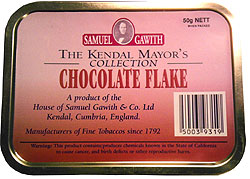 Liner Notes: A product of the House of Samuel Gawith & Co. Ltd – Kendal, Cumbria, England. From the Website: The first of a collection dedicated to Samuel Gawith the First, Chocolate Flake is a luxury blend of Virginias, Burley and long-leaf Latakias. To complete the luxury a rich, dark chocolate has been added after cutting. Excellent smoking qualities with a good smoke and a delicious room note. Medium strength.
Liner Notes: A product of the House of Samuel Gawith & Co. Ltd – Kendal, Cumbria, England. From the Website: The first of a collection dedicated to Samuel Gawith the First, Chocolate Flake is a luxury blend of Virginias, Burley and long-leaf Latakias. To complete the luxury a rich, dark chocolate has been added after cutting. Excellent smoking qualities with a good smoke and a delicious room note. Medium strength.
Normally when I set out to review a tobacco, I choose a blend that is new to me. The reason for this is two-fold. First and foremost, I like to approach the blend with no pre-conceived notions or ideas…or, at least as few as possible. The other reason is that I take a clinical, almost sterile approach to reviewing tobaccos; something that doesn’t lend itself readily to the peaceful bliss I seek when smoking an "old friend" as it were. That said, blends that I review often do end up finding a home either in my active rotation or in my cellar – however there are a few blends that I smoke regularly that I keep for just that – smoking.
Often, the process starts with communications between myself and Kevin Godbee; discussing which blenders have recently been featured, what types of blends have recently been featured, and what blends we would like to look to next. At times, he will send me off in search of something specific, at others I am given free-run to pick something at will.
A week to ten days after the afore mentioned conversation takes place, a package arrives at my door, containing a lone tin of tobacco (and perhaps a few bundles of pipe-cleaners – one can never have to many pipe-cleaners). But before I can delve into the package, there are a few things that I must prepare…so, despite my excitement, I set the package aside and head to the kitchen for a mug of tea (Orange Pekot, steeped ten minutes, no sugar or milk), a tall glass of cool (distilled) water and a few slices of English cucumber.
With my palate cleansers ready, it’s finally time to free my new acquisition from it’s cardboard home. For a moment, all care is lost, and with a flurry of packing peanuts, my prize is revealed. And now the fun begins….
If I am lucky, Kevin has secured himself a tin of the same – but, more often than not (particularly when I choose the blend at hand), he has not. Now, I never made any claims about my talents as a photographer; but of course, the column does require some sort of visual stimuli…so I haul out my camera, and spend the next couple of hours shooting the exterior of the tin in different lights…followed by a few shots with the cell-phone for good measure. As I shoot, I’ll jot down any notes that pop into my mind in regards to presentation and tin-art; starting the formal reviewing process.
Next, I carefully crack the seal – inhaling deeply and noting what my olfactory senses detect. I’ll handle the tobacco (replacing it in the tin), feeling it’s general humidity. I also visually inspect the tobacco at this time, noting both cut and colouring. Then, it’s back to the camera (and cell-phone), with another hour spent shooting the tobacco itself.
With my photographs taken, I can finally select a pipe. Over the course of the tin I will smoke the blend through Briar, Meerschaum, Clay, and corn-cob, in addition to utilizing a variety of bowl shapes. I will also vary my packing methods, utilizing at times the "cannon-ball", "three-stage", "Frank", and "pinch" methods…but, for simplicities sake (and to create a "fresh" baseline); the first bowl is always smoked through a medium sized briar of unremarkable chamber proportions, which I am very familiar with the smoking qualities of, packed with the "pinch" method (my preferred load). I also perform a full charring light; however as I smoke through the tin, I will simply load and go with a couple of bowls.
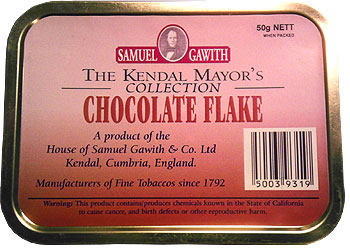 |
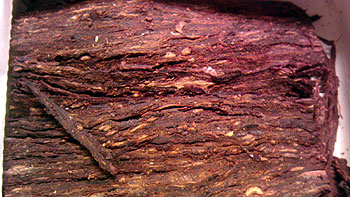 |
Before I can ply flame, however, there are notes to be taken. Did the blend require additional time to dry before smoking? Did the aroma of the blend change during said drying time? What about the colouring? How does the tobacco "handle" during packing – is it a bear to load a bowl, or does the blend seem to jump into the chamber? If you sip at the pipe prior to lighting, is there a flavour? Not until I’ve answered these questions can I reach for my lighter…or can I?
Now that I have selected my weapons, I must select my battlefield. If the day is nice, I may head to one of the many local green-belts to find a quiet place in the shade. If the weather is inclement (as it often is in Vancouver, Canada), I will squirrel myself away in my "man-cave". Most importantly, the location I choose should be devoid of too much external stimuli – while I don’t demand the absolute absence of visceral stimulation some evaluators do, I prefer to work in a quiet, secluded location – affording me the opportunity to give my full attention to the task at hand.
With charring light, the real note taking starts. I look at how the blend takes the flame; I look at the mouth feel of the smoke, and, most importantly, I look at the flavour profile and room-note.
From true light through heel, I note changes not only to the room-note, flavour profile and mouth feel, but on the burning qualities. Do I have to relight every five minutes (relights, by the way, are when I sip some tea and munch some cucumber; followed by a big drink of water to cleanse my palate)? How often am I tamping?
I also look at the physical properties of the tobacco whilst burning – does it produce an abundance of moisture? If I lift the bowl to my nose, do I detect ammonic hints? If I swab with a pipe-cleaner, how much grime do I pull out? Of course, these factors can vary due to the pipe, hence why I smoke the entire tin before putting pen to paper (or fingers to keys) with my final work.
With the bowl finished, I will carefully inspect the ash and dottle remnants. Is there an over-abundance of the latter? Is the former so fine it clogs the draw? I then inspect the inside of the burning chamber of the pipe – is there any wet sludge left behind? Did the tobacco burn well, or are there lots of "bits" stuck to the walls? I ruminate for a moment on the personal satisfaction level of the blend – do I crave a cigarette? I then make notes on the after-taste and mouth-feel post smoke, before calling my wife over to comment on the room-note and latent aroma on my facial hair and clothing.
Finally, I note things like smoking time, time of day, temperature and relative humidity, time of last meal, and external stimuli that may have skewed my perceptions. This ensures that I sample the blend in varying environments; providing a more complete evaluation of the product.
Of course, this is just the first bowl of many…and, as I am striving to create a baseline, this bowl is smoked very slowly. Over the next four or five days, I will push the blend to it’s limits; literally forcing myself to smoke too fast, tamp too hard, and generally ignore all pipe-smokers wisdom. I will smoke the bowl in small enclosed spaces (for example, a vehicle), and in wide open spaces (read: the great outdoors). I will smoke the blend in sun, wind, hail, sleet and snow (when available). And through it all, I take pages and pages of notes.
That’s the easy part…
Next, I go over the literally hundreds of photographs, selecting the best dozen or so to forward to Kevin (surprise; the cell-phone pics usually make the final cut…) – who then spends hours working his editing magic to make the subject recognizable (I really am a terrible photographer…). I compile the pages of notes, seeking similarities between the bowls smoked into one master sheet, from which my final review will be created. Then, I sit down at the computer and spend hours staring at the wall while I try and turn the technical notes I’ve compiled into something you might want to read.
This is submitted to Kevin as an unformatted block of text. Once again, he works his editorial magic, filtering out errors as he catches them, and creating some sort of flow out of my run-on sentences.
But to every rule there is an exception, and this article would be just that. Samuel Gawith Chocolate Flake is a regular in my rotation for special occasions – in fact it’s the blend I usually reward myself with upon completion of a review.
The presentation of this blend like most of the Samuel Gawith line, is quite simple and harkens back to a simpler time where fancy graphics and slick copy weren’t the norm. Featuring the standard Samuel Gawith rectangular tin, the tobacco is beautifully presented in two parallel rows of flakes, one slightly shorter than the next, stacked carefully within the heavy cardstock liner.
As with all Samuel Gawith blends, Chocolate Flake ships wet. Not moist, not damp, but wet. Un-burn-ably so. I find that four hours drying time is about perfect when the tobacco is kept in flake form, or two hours if rubbed out. Visual inspection of the flakes will reveal two things – first, the motley of chocolate and dark browns, interspersed with black leaf and the occasional fleck of tan. Second; it will reveal bloom. I don’t know what it is about the blends from the house of Samuel Gawith, but they almost seem to age before ones eyes. The tin in the photograph was purchased at Christmas 2011, and by Easter 2012 was already showing crystals.
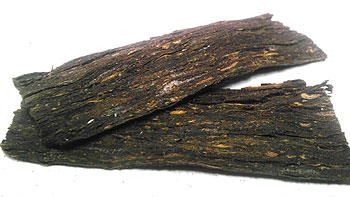 |
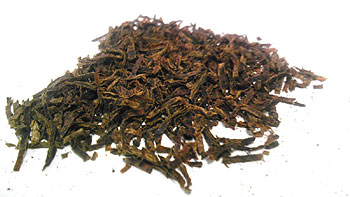 |
The tin note of this blend is something of a chameleon – when first opened, the prevalent aroma is very rich and earthy, akin to musty, wet-leaves with a slight peat-like note. However, as the blend drys, the mustiness grows ever weaker, with a mild cocoa aroma growing in strength.
When it comes to packing Samuel Gawith Flakes, I find the method that produces the best results for me is to lightly rub them (or, more correctly, break them up) into strips approximately three-quarters of an inch long, and an eight to a quarter of an inch wide, which I then simply stuff into the chamber; using any remaining small pieces as kindling. That said, the flake does rub out very nicely into a coarse ribbon, and responds well to the "cannon-ball" method of packing in this form, although I did find the flavour profile was somewhat diminished in strength when rubbed. A pre-light sip brings a very mild cocoa flavour, underpinned with a slight hint of camphor.
Like many of the Samuel Gawith offerings, it can take a few matches (or flicks of the lighter) to bring Chocolate Flake to an even burn (particularly when smoked as a broken flake, or "folded and stuffed"). Depending on the relative humidity of the leaf, care should be taken to ensure you don’t scorch the underlying leaf when applying the charring light.
That said, the flavour profile at this point feels rather thin, and undeveloped – a mishmash of grassy brights and earthy dark fired, with the slightest hint of Latakia on the back of the palate. A mild, almost nutty cocoa flavour, underpinned by a slight floral note is barely detectable in the somewhat thin smoke stream.
True-light, however, brings the full potential of this tobacco to light (pardon the pun). The seemingly thin, underwhelming smoke-stream of charring-light grows bold and creamy, while the flavours begin to develop from a washed out mish-mash into something with body and presence. The earthy sweetness of the dark-fired leaf takes precedence, while the Latakia and dark cocoa casing fight in a strange interplay, at times growing almost bold, while at others being next to undetectable.
As you progress through the mid-way point, the bold, earthy flavours continue to provide the main body of the flavour profile, while a sweetness that is reminiscent of molasses candies begins to take hold. The cocoa casing grows somewhat bolder, however, it remains in the background. The smoky Latakia notes continue to weave in and out of the flavour profile, providing subtle depth and complexity.
To me, the bottom third of the bowl provides the most reward, flavour-wise. The earthy notes remain bold, however by this time, the caramel note has taken the forefront. The cocoa flavour continues to grow more pronounced, taking on a wonderful nuttiness, which, combined with the caramel sweet flavours brings a flavour not unlike hazelnut truffle. The Latakia continues to provide subtle moky notes, however, by the heel it has all but disappeared. This is underpinned by a mild floral note, barely detectable deep in the background.
Although the smoke starts out rather thin, by the end of the bowl it has taken on a creamy mouth-feel. If care is given to drying and loading, Chocolate Flake can be pushed very hard before it bites back – but be warned, when it does decide to bite, it does so with a vengeance!
The burning qualities are exceptional – in fact, almost too good. The ash remnants are so fine that one must be extremely careful when tamping so as not to clog the airway.
When it comes to nicotine, this blend is no slouch. I would suggest you smoke this blend on a full stomach if you have any concerns about nicotine levels.
There seems to be some argument about the room-note this blend leaves behind. My wife regards it as foul, while my vehement anti-smoking mother-in-law sidles up beside me full of positive comments, whenever this blend is out. The latent smoke on my moustache, however, wins full points from my wife. Slightly nutty, and very cocoa-esque, one would never know there was Latakia involved.
My first experience with this tobacco came through a sampler trade – I sent off a few baggies of various blends, and received a healthy bag of these wonderful flakes, glistening with sugary-bloom. From the moment flame touched tobacco, I was hooked – mildly aromatic, yet full of body, with just enough Latakia to keep me interested.
If you’re looking for a blend that will bombard your taste buds with sweet chocolate flavours, you would be well served to keep looking. Very lightly cased, Samuel Gawith Chocolate Flake offers a very pleasant tobacco flavour, with a room-note that seemingly doesn’t drive anyone away (my wife being the exception). Great "fresh" from production, Chocolate Flake ages exceptionally; with the sweetness seemingly growing exponentially. While a little too full-bodied for all day smoking, this is a wonderful blend – particularly after a large meal.
I highly recommend it!







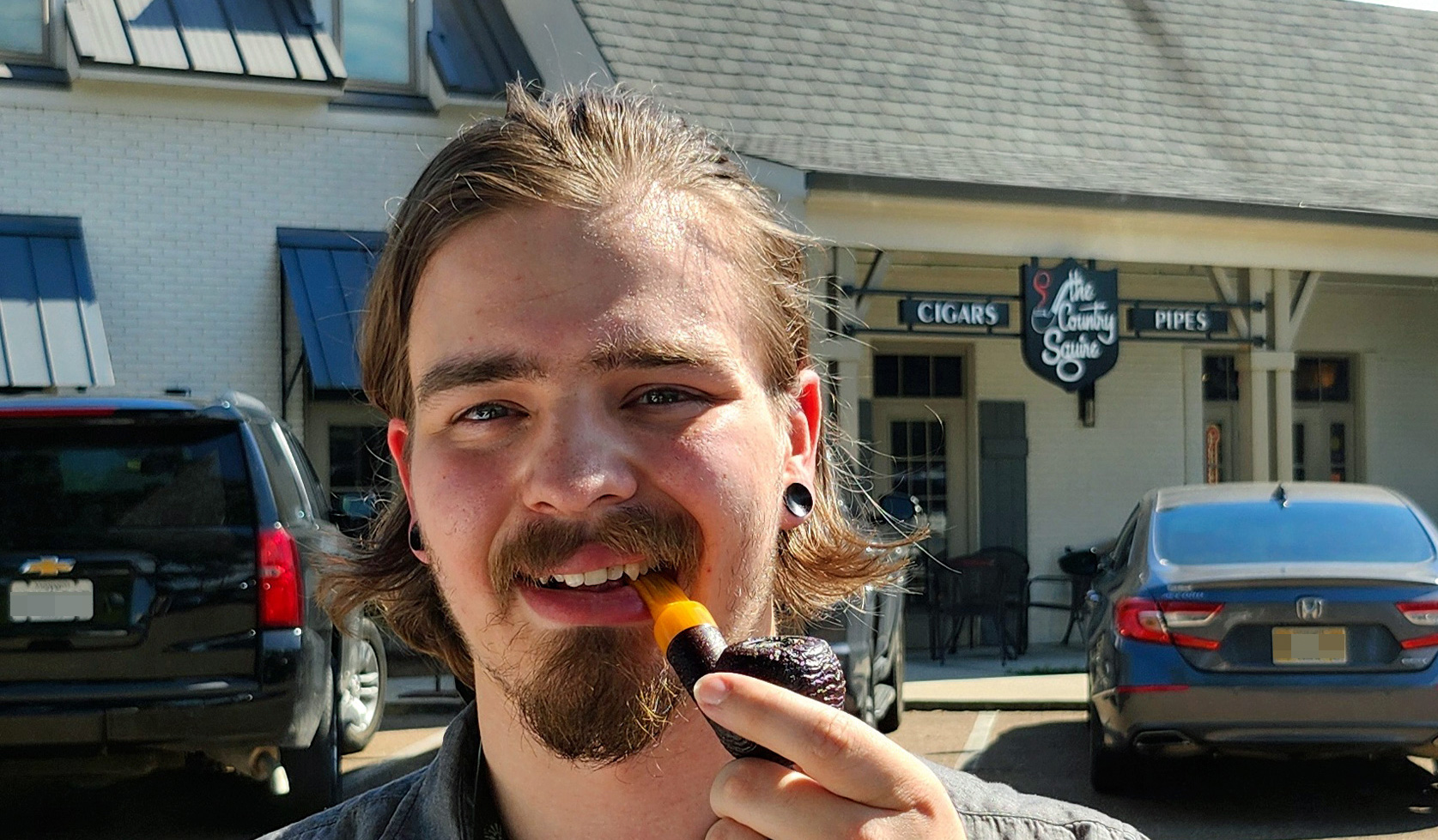

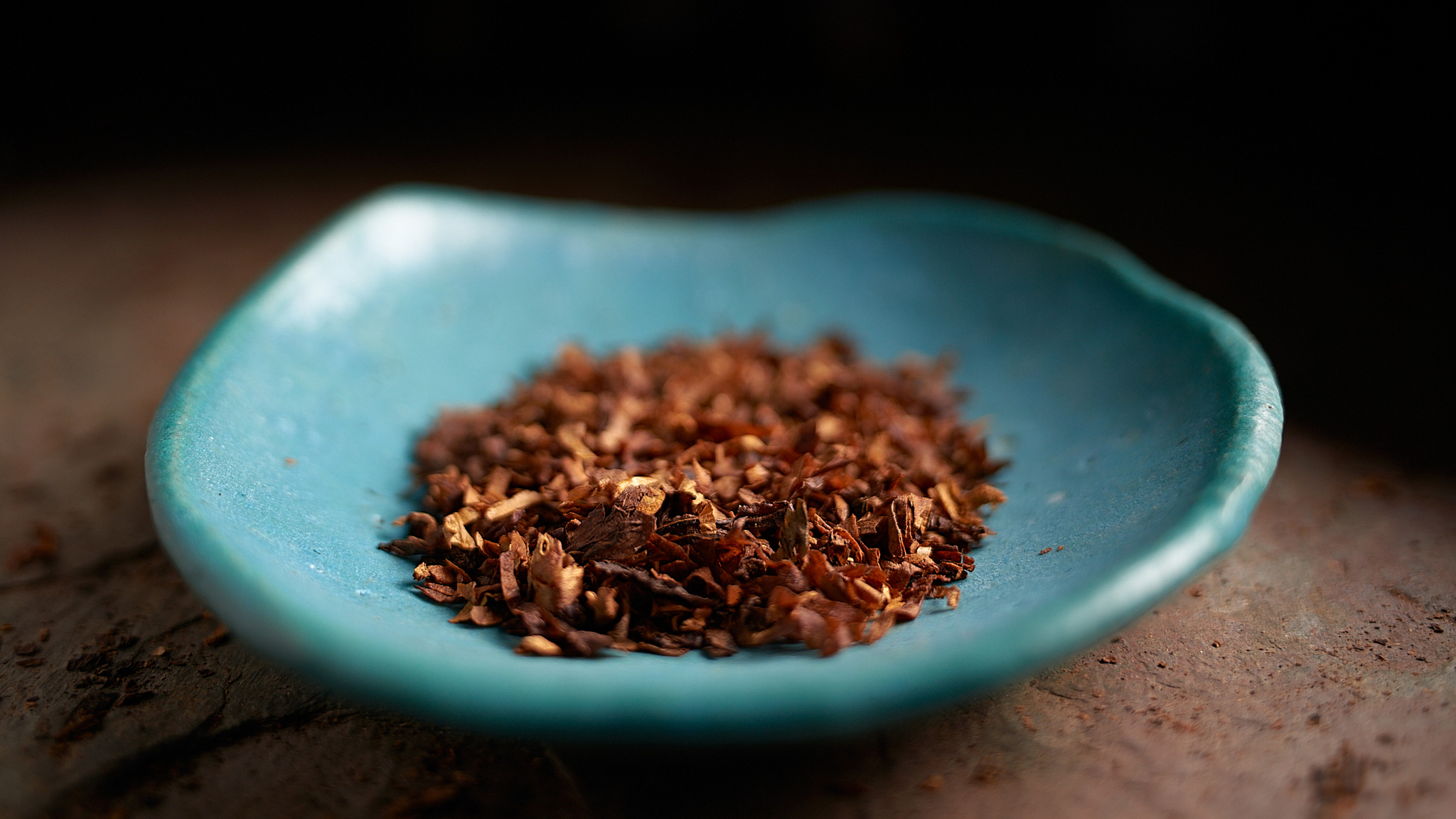
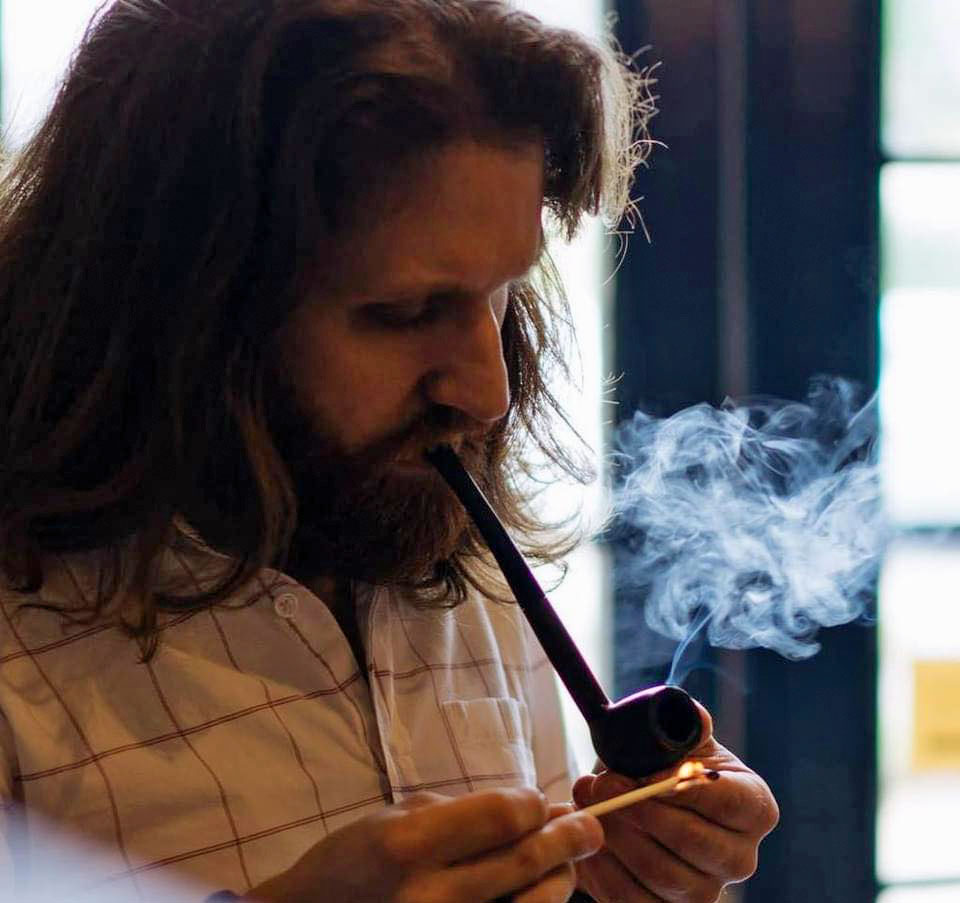






The gold standard of “Review Writing 220 Advanced”. I will refer back often.
While the tobacco is probably not to my taste, the review was a pleasure to read. I can see why Kevin relies on this reviewer.
Some of my favored pipe tobaccos are good all-round smokes, but others seem best for a particular setting. What can I say about SG Chocolate Flake, other than it’s a favorite winter smoke, esp. around the holidays? My tin for Dec 2012 is already in the cellar. . . .
Thanks for excellent review, Adam! Another to add to the TAD list.
-J
Wonderful insight into both the process and the blend, Adam. Interestingly enough, I take a nearly diametric approach when preparing a review: I usually pop a tin while speeding down to Atlantic City for a weekend of debauchery, my editor / consigliere riding shotgun and a couple of hitch-hikers in the back seat for ballast should we encounter John Law, all the while puffing away like the proverbial steam-train while I search for gospel stations on the AM. Perhaps next time I’ll try your approach. Either way, this Gawith line has intrigued me for a while, what with its Lakeland angle, and I think this Chocolate Flake may be the best introductory bet. Thanks for the great review!
Your review represents my experience as well. But I could not taste the Latakia. I also suspect that a little tonka, or some other vanilla-ish flavoring is in there. Reminiscent of Kendall Cream Flake.
I like this tobacco. I agree the chocolate doesn’t overpower. To fill my humble Hilson (a little alliteration for you there) I fold a slice or two in half and stuff it in. Lights real easy. Good tobac. This types of tobac I like to smoke in a small chambered pipe. The Hilson is nice and I have this little Stanwell which is perfect.
Magnificent, standard-setting review! Any chance you have Gawith’s Full Virginia Flake in your sights for a review in the near future? If the site had a suggestion box, I’d stuff it with a ream of “FGF Review by Adam J. Smith” slips.